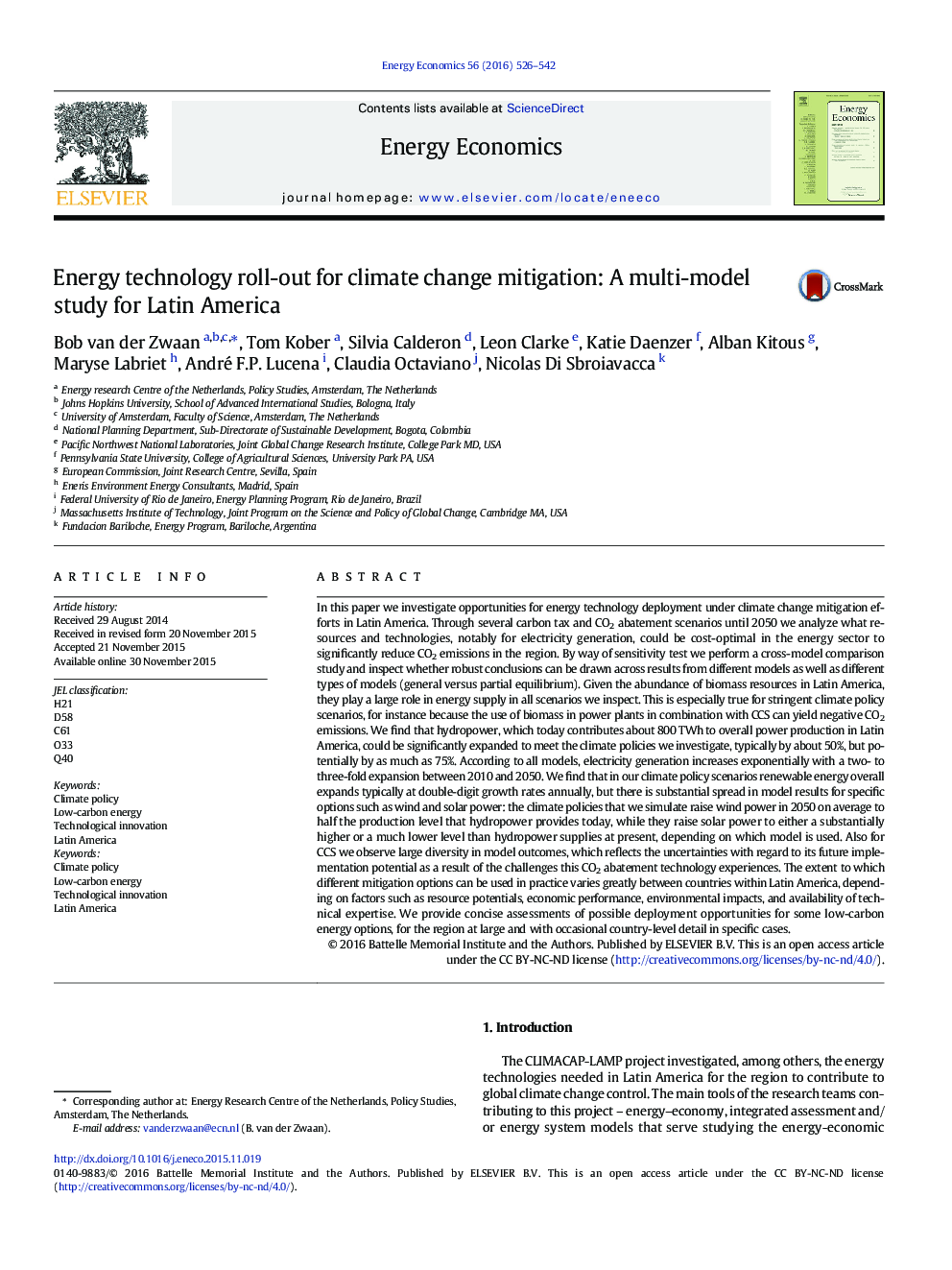| کد مقاله | کد نشریه | سال انتشار | مقاله انگلیسی | نسخه تمام متن |
|---|---|---|---|---|
| 5064003 | 1476708 | 2016 | 17 صفحه PDF | دانلود رایگان |
- We investigate opportunities for energy technology deployment under climate change mitigation efforts in Latin America.
- Through several policy scenarios until 2050 we analyse what technologies could be cost-optimal to reduce CO2 emissions.
- We perform a cross-model comparison study and inspect whether robust conclusions can be drawn across different models.
- We find that hydropower can be significantly expanded to meet our climate policies, typically by about 50%.
- According to all models, electricity generation increases exponentially with a two- to three-fold expansion until 2050.
- Renewable energy expands at double-digit growth rates, with substantial cross-model variation for specific options.
In this paper we investigate opportunities for energy technology deployment under climate change mitigation efforts in Latin America. Through several carbon tax and CO2 abatement scenarios until 2050 we analyze what resources and technologies, notably for electricity generation, could be cost-optimal in the energy sector to significantly reduce CO2 emissions in the region. By way of sensitivity test we perform a cross-model comparison study and inspect whether robust conclusions can be drawn across results from different models as well as different types of models (general versus partial equilibrium). Given the abundance of biomass resources in Latin America, they play a large role in energy supply in all scenarios we inspect. This is especially true for stringent climate policy scenarios, for instance because the use of biomass in power plants in combination with CCS can yield negative CO2 emissions. We find that hydropower, which today contributes about 800 TWh to overall power production in Latin America, could be significantly expanded to meet the climate policies we investigate, typically by about 50%, but potentially by as much as 75%. According to all models, electricity generation increases exponentially with a two- to three-fold expansion between 2010 and 2050. We find that in our climate policy scenarios renewable energy overall expands typically at double-digit growth rates annually, but there is substantial spread in model results for specific options such as wind and solar power: the climate policies that we simulate raise wind power in 2050 on average to half the production level that hydropower provides today, while they raise solar power to either a substantially higher or a much lower level than hydropower supplies at present, depending on which model is used. Also for CCS we observe large diversity in model outcomes, which reflects the uncertainties with regard to its future implementation potential as a result of the challenges this CO2 abatement technology experiences. The extent to which different mitigation options can be used in practice varies greatly between countries within Latin America, depending on factors such as resource potentials, economic performance, environmental impacts, and availability of technical expertise. We provide concise assessments of possible deployment opportunities for some low-carbon energy options, for the region at large and with occasional country-level detail in specific cases.
Journal: Energy Economics - Volume 56, May 2016, Pages 526-542
